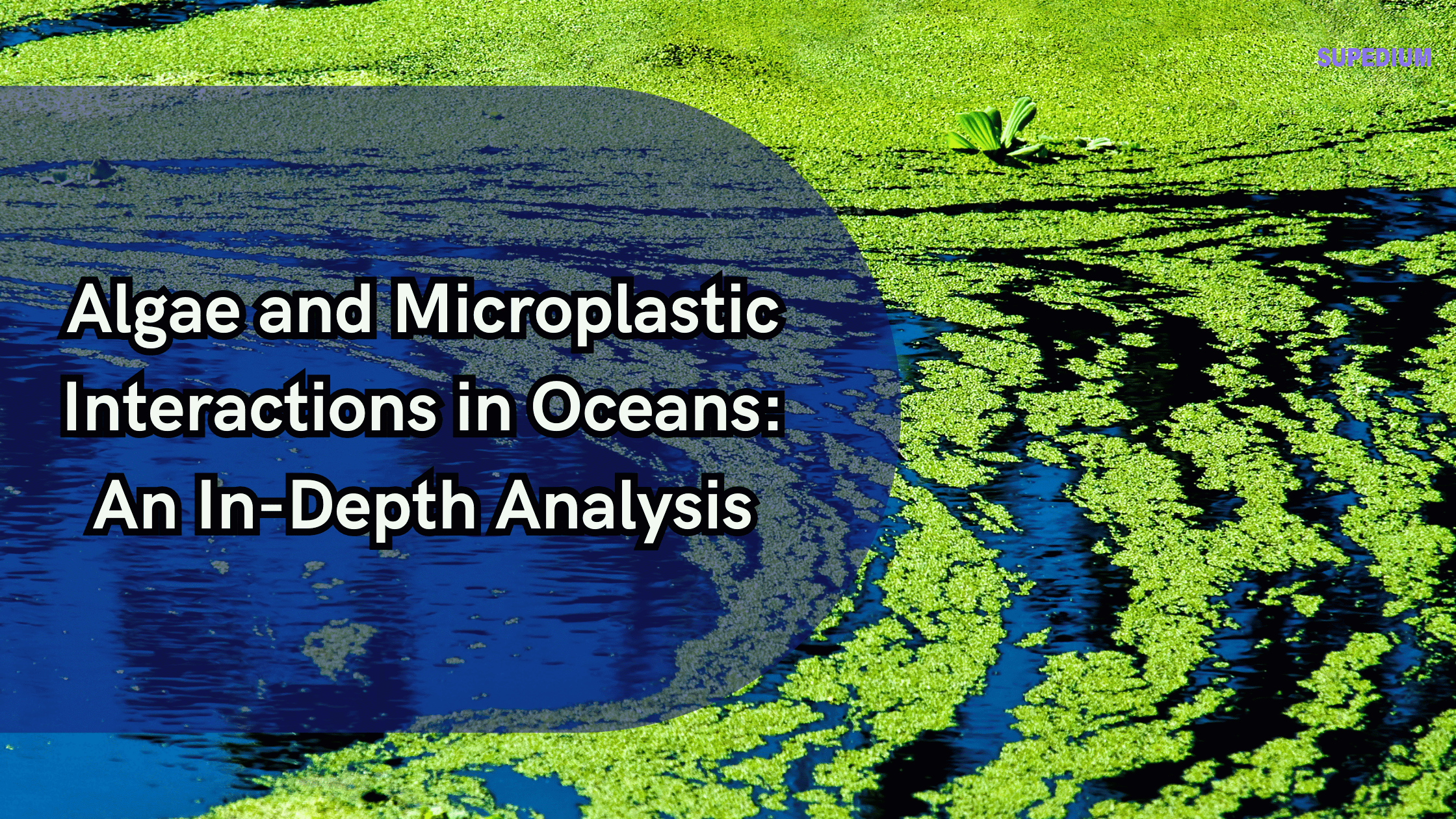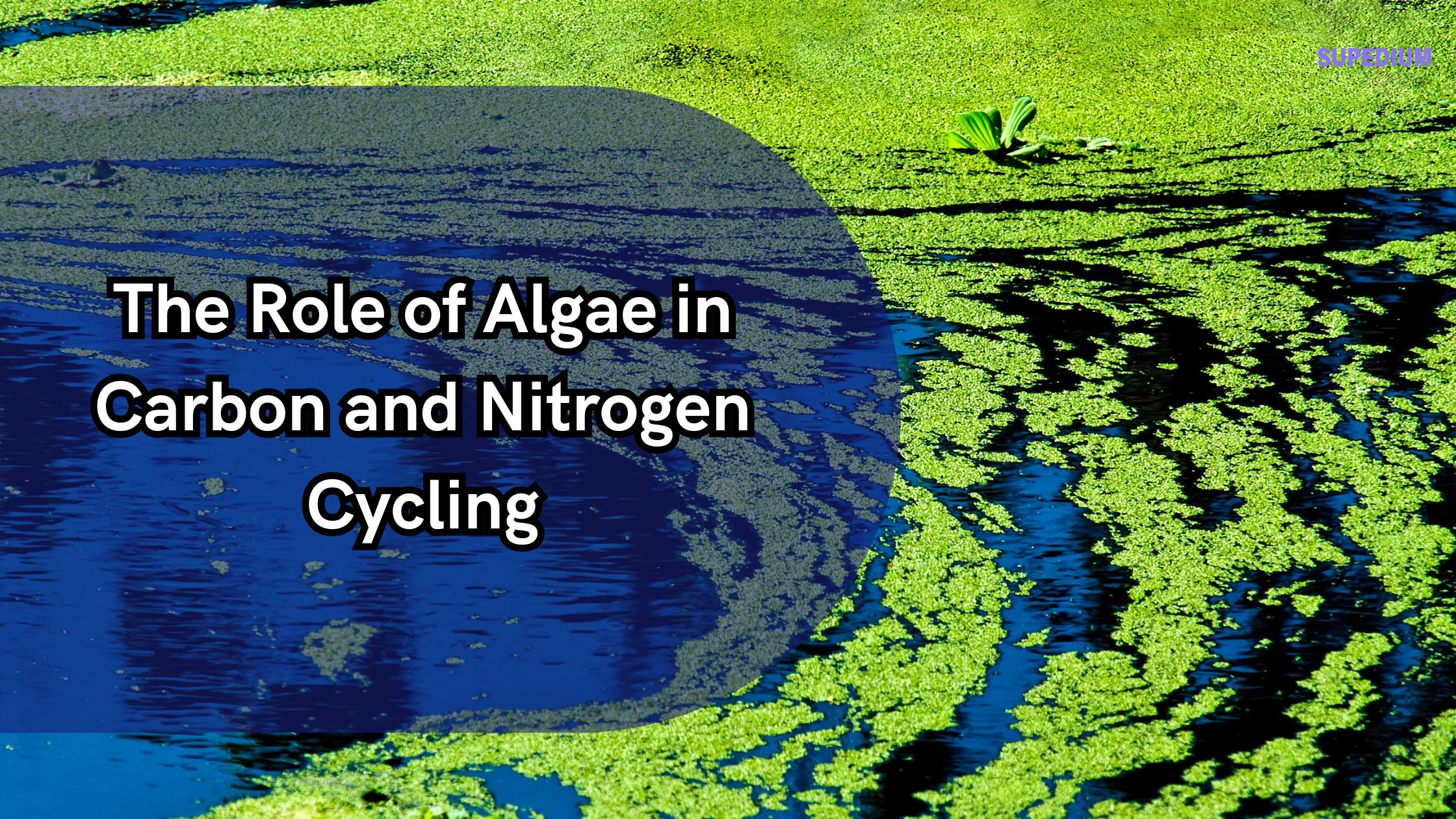Table of Contents
- 1 I. Introduction
- 2 II. Algae in Marine Environments
- 3 III. Microplastics in Marine Environments
- 4 IV. Interactions Between Algae and Microplastics
- 5 V. Impacts on Marine Ecosystems
- 6 VI. Human and Environmental Health Concerns
- 7 VII. Current Research and Monitoring
- 8 VIII. Mitigation and Management Strategies
- 9 IX. Future Directions
- 10 X. Conclusion
![]()
I. Introduction
The oceans, covering over 70% of Earth’s surface, are vital to global ecosystems and climate regulation. Within these vast bodies of water, phytoplankton, macroalgae (seaweeds), and increasingly, microplastics, play significant roles. Algae, including phytoplankton and seaweeds, are fundamental primary producers, supporting marine food webs and contributing to oxygen production. Meanwhile, microplastics, tiny particles of plastic debris less than 5 millimeters in size, have become pervasive pollutants in marine environments. Understanding the interactions between algae and microplastics is crucial for assessing the health of ocean ecosystems and their broader implications for marine life and human health.
II. Algae in Marine Environments
A. Definition and Types of Algae
Algae are a diverse group of photosynthetic organisms found in various aquatic environments. They range from microscopic phytoplankton, which float in the water column, to macroscopic macroalgae, such as kelp and seaweeds, which anchor to the ocean floor.
- Phytoplankton: These are microscopic, single-celled organisms that drift in the water column and are essential for marine primary production. They form the base of the oceanic food web, converting sunlight and nutrients into organic matter.
- Macroalgae: Larger and more complex, macroalgae include species such as kelp, sea lettuce, and dulse. They provide habitat and food for a wide range of marine organisms and contribute to coastal protection and nutrient cycling.
B. Ecological Roles of Algae
Algae perform several critical functions in marine ecosystems:
- Primary Producers: By photosynthesizing, algae convert sunlight into energy, producing organic compounds that serve as the foundation of marine food webs.
- Oxygen Production and Carbon Sequestration: Algae contribute significantly to oxygen production and help mitigate climate change by sequestering carbon dioxide from the atmosphere.
- Habitat and Food Source: Algae provide essential habitat and food for numerous marine species, from small invertebrates to large fish and marine mammals.
III. Microplastics in Marine Environments
A. Definition and Sources of Microplastics
Microplastics are tiny plastic particles, often smaller than 5 millimeters, derived from various sources:
- Primary Microplastics: These are manufactured small plastic particles, such as microbeads used in personal care products and pre-production plastic pellets (nurdles).
- Secondary Microplastics: These result from the breakdown of larger plastic debris, including bottles, bags, and fishing gear, which fragment into smaller pieces over time due to environmental weathering.
B. Distribution and Accumulation
Microplastics are distributed throughout marine environments:
- Oceanic Gyres and Hotspots: Large-scale ocean currents concentrate microplastics in regions known as gyres, such as the Great Pacific Garbage Patch.
- Shorelines and Sediments: Microplastics also accumulate along coastlines and in marine sediments, where they pose risks to benthic organisms and coastal ecosystems.
IV. Interactions Between Algae and Microplastics
A. Physical Interactions
Microplastics can interact with algae in various ways:
- Adsorption: Microplastics often adsorb onto the surfaces of algae, which can affect the algae’s ability to photosynthesize and uptake nutrients. The plastic particles can also carry toxic chemicals, which may leach into the algae.
- Entanglement and Physical Damage: Microplastics can become entangled with macroalgae, potentially causing physical damage and impairing growth. This can lead to reduced reproductive success and altered community dynamics.
B. Biological Interactions
The presence of microplastics can impact algal health and growth:
- Effects on Growth and Health: Microplastics may alter nutrient availability, affecting algal growth. Additionally, microplastics can release toxic substances, leading to physiological stress and impaired development in algae.
- Algal Blooms: The interaction between microplastics and algae may influence the occurrence and dynamics of algal blooms. Alterations in nutrient cycling and community structure can lead to changes in bloom frequency and intensity.
V. Impacts on Marine Ecosystems
A. Food Web Implications
Microplastics can enter marine food webs through various pathways:
- Transfer Through the Food Web: Marine organisms that consume algae contaminated with microplastics may ingest these particles, leading to their accumulation up the food chain.
- Effects on Marine Organisms: Microplastics can affect the health and behavior of marine species that rely on algae for food, potentially impacting growth, reproduction, and survival.
B. Consequences for Higher Trophic Levels
The impacts of microplastics can extend to higher trophic levels:
- Impact on Fish and Invertebrates: Species that consume contaminated algae or small prey can accumulate microplastics, which may affect their physiology and overall health.
- Effects on Marine Mammals and Birds: Marine mammals and birds that consume contaminated fish or invertebrates may also be at risk, leading to potential health problems and reproductive issues.
VI. Human and Environmental Health Concerns
A. Human Consumption of Microplastics
Microplastics pose potential health risks to humans through seafood consumption:
- Health Risks: Ingesting microplastics can lead to the accumulation of harmful chemicals and toxins in the human body, with uncertain long-term health effects.
- Implications for Fisheries and Aquaculture: The presence of microplastics in seafood raises concerns for the safety and sustainability of fisheries and aquaculture industries.
B. Environmental Impacts
Microplastics have broader environmental consequences:
- Long-term Ecological Effects: The persistence of microplastics in marine environments can lead to long-lasting ecological changes, affecting biodiversity and ecosystem functioning.
- Socioeconomic Effects: Coastal communities dependent on healthy marine environments may experience economic impacts due to declining fish stocks and ecosystem degradation.
VII. Current Research and Monitoring
A. Methods for Studying Algae and Microplastic Interactions
Research on algae and microplastics involves various methodologies:
- Laboratory Experiments: Controlled experiments help to understand the effects of microplastics on algal health and growth, as well as the mechanisms of interaction.
- Field Studies and Monitoring Programs: Long-term monitoring and field studies provide insights into the distribution and impacts of microplastics in natural marine settings.
B. Key Findings and Ongoing Research Efforts
Recent research has revealed several critical findings:
- Discoveries and Advancements: Studies have shown that microplastics can significantly affect algal health and ecosystem dynamics, highlighting the need for continued investigation.
- Areas Requiring Further Investigation: Further research is needed to fully understand the long-term impacts of microplastics on marine ecosystems and to develop effective mitigation strategies.
VIII. Mitigation and Management Strategies
A. Reducing Microplastic Pollution
Efforts to address microplastic pollution include:
- Policy and Regulation: Implementing policies to reduce plastic production, improve waste management, and ban microbeads in personal care products.
- Public Awareness and Behavior Change: Promoting awareness and encouraging behavior changes, such as reducing plastic use and supporting recycling efforts.
B. Protecting and Managing Algal Populations
Protecting algae involves:
- Conservation Efforts: Implementing measures to protect critical algal habitats and promote sustainable harvesting practices.
- Sustainable Practices: Adopting practices that minimize pollution and reduce the impact of human activities on marine environments.
IX. Future Directions
A. Emerging Technologies and Approaches
Advancements in technology are crucial for addressing microplastic pollution:
- Innovations in Microplastic Removal and Recycling: Developing new technologies for effectively removing microplastics from marine environments and improving recycling processes.
- Advances in Ecological Modeling and Monitoring: Enhancing models and monitoring techniques to better understand and predict the impacts of microplastics on marine ecosystems.
B. Collaboration and Interdisciplinary Research
Effective solutions require collaboration:
- Collaborative Efforts: Engaging scientists, policymakers, and communities in addressing oceanic challenges and developing comprehensive solutions.
- International Cooperation: Promoting international cooperation to tackle global marine pollution issues and implement coordinated strategies.
X. Conclusion
The interactions between algae and microplastics in the oceans present significant challenges for marine ecosystems and human health. Algae play a crucial role in marine environments, while microplastics pose growing threats through their pervasive presence and potential impacts. Continued research, innovative technologies, and collaborative efforts are essential to understanding and mitigating these interactions. Addressing the challenges posed by microplastics and protecting algal populations are critical for maintaining the health and resilience of our oceans and the broader global environment.
Share This





Be the first to comment